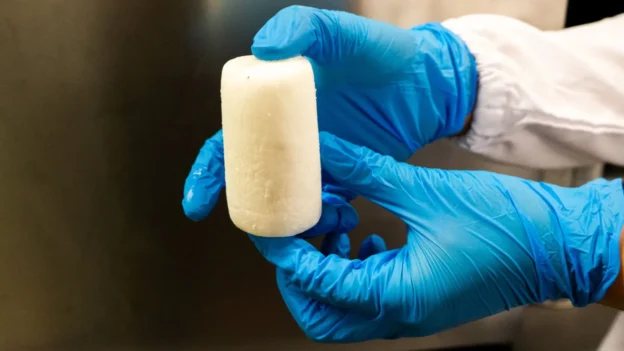A team at the National University of Singapore (NUS), led by Professor Praveen Linga of the Department of Chemical and Biomolecular Engineering, has created a new type of “amino acid ice” with capabilities to store methane 30 times faster than conventional ice.
The development of a type of ice with amino acids
The study, titled “Rapid conversion of amino acid modified-ice to methane hydrate for sustainable energy storage”, was published in the journal Nature Communications and demonstrates that freezing water with small amounts of amino acids allows methane to be captured in the form of gas hydrates in just minutes. In comparison,
This process is ingeniously simple: by mixing water with certain amino acids before freezing, the resulting ice forms a surface more favorable for conversion to methane hydrates.
During tests, this modified ice reached 90% of its storage capacity in just over two minutes.
According to Dr. Ye Zhang, lead author of the study, hydrophobic amino acids such as tryptophan or methionine favor the formation of liquid microlayers on the surface of the ice, where methane rapidly adheres, creating a spongy structure that accelerates the process. In other words, hydrophilic amino acids, such as histidine or arginine, did not produce the same effect.
On the other hand, synthetic surfactants used in other systems on the market today have demonstrated efficiency before amino acids are biodegradable and safe, eliminating contamination risks.
And finally, being a reusable material, the gas is released by a slight heating, allowing the ice to be refrozen for a new storage cycle, creating a closed system with low energy consumption.
Source and photo: NUS


